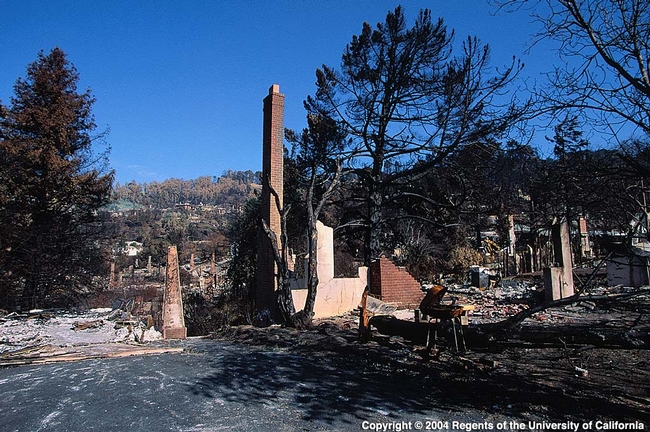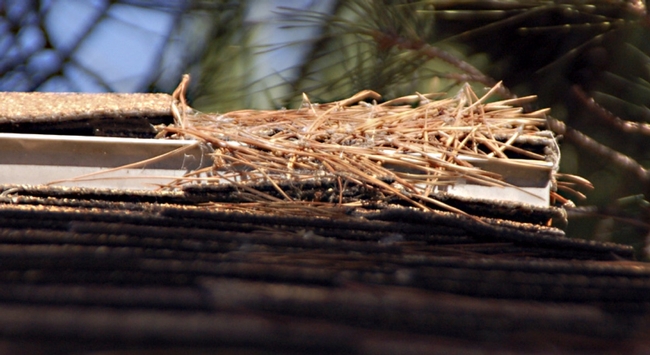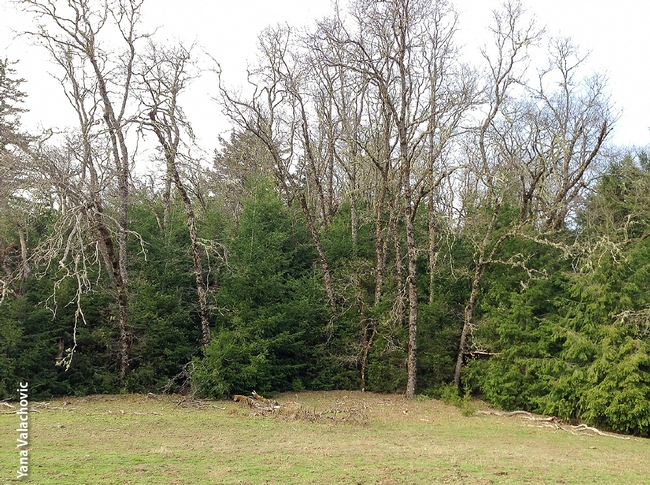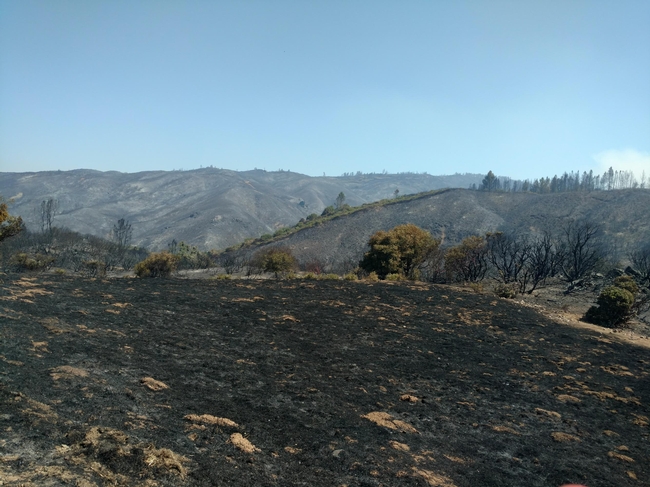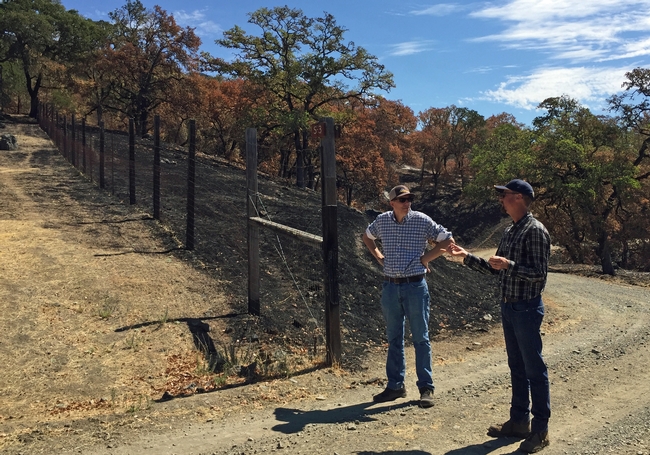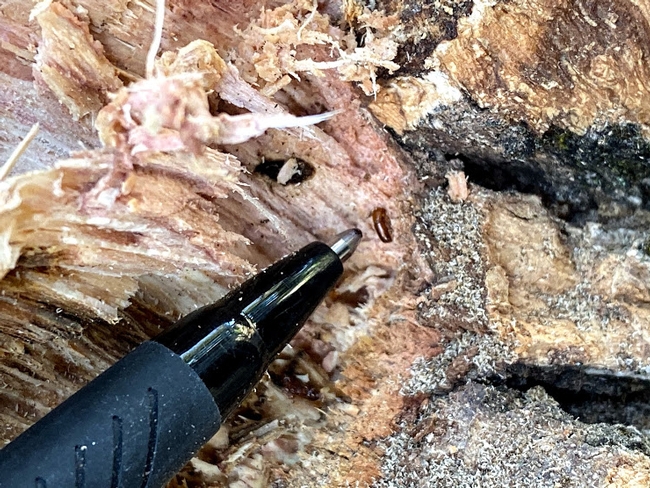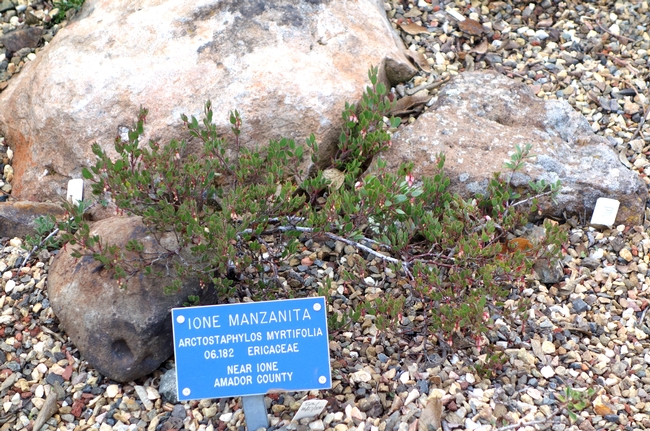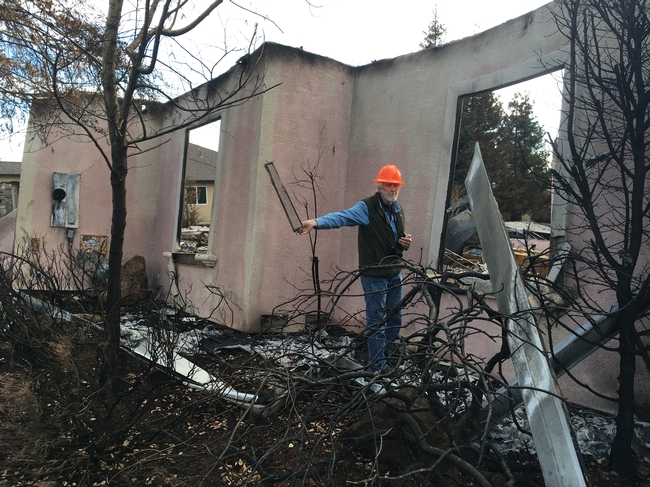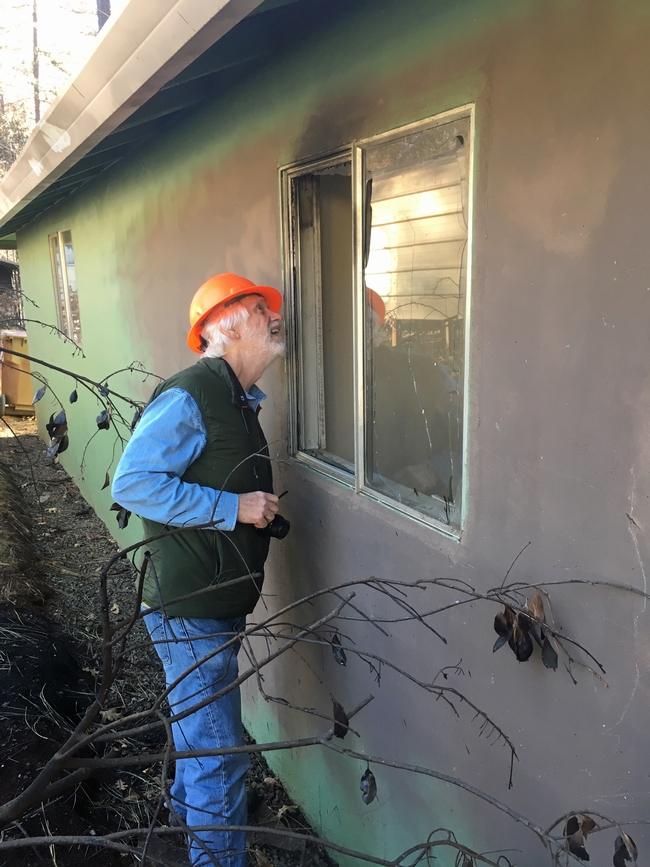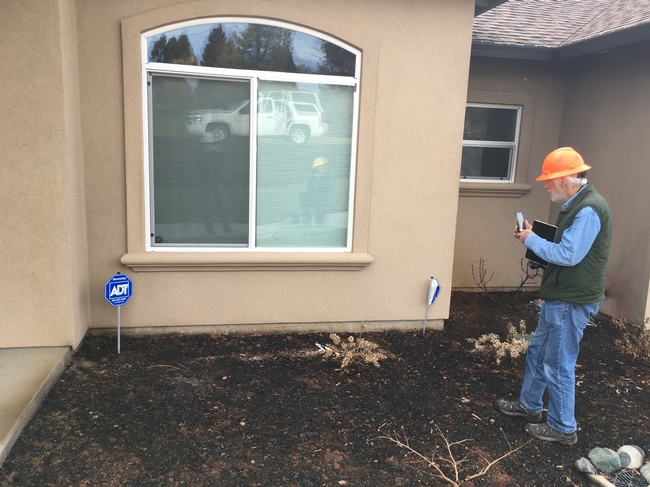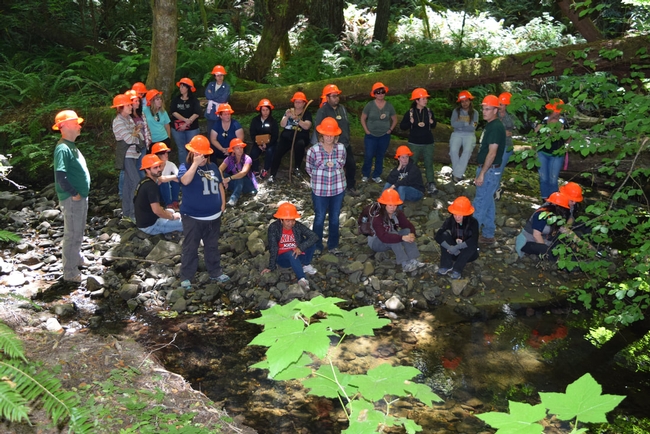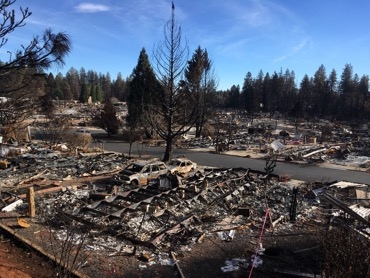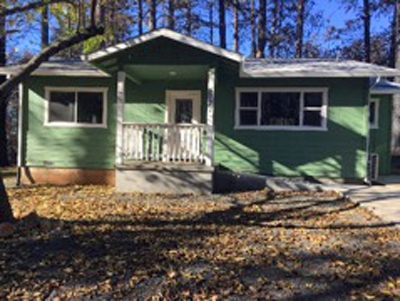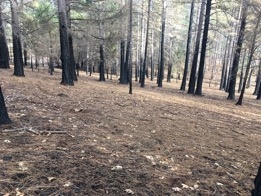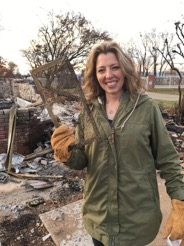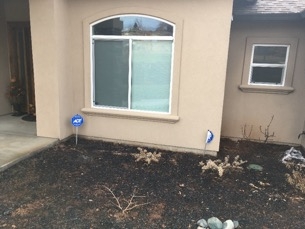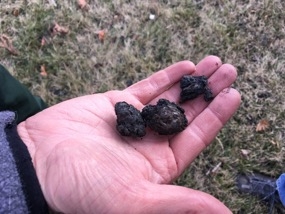Posts Tagged: Yana Valachovic
Houses likely burned from the inside out, says UCCE forest advisor
Preventing embers from getting inside may save homes
Photos and video of the Northern California communities that have been hit by wildfires show buildings reduced to ash. How could so many homes and businesses burn so quickly in the 2017 Wine Country fires? Many houses that burned to the ground in the Northern California fires likely burned from the inside out, says Yana Valachovic, UC Cooperative Extension forest advisor for Humboldt and Del Norte counties.
Red hot embers carried on the wind can enter the attic via the venting. “In the case of the wind-driven fires on October 8, these fires created ember storms that blasted little coals into everything in their pathway,” Valachovic said. These embers also create small spot fires near the home that fuel new sources of embers.
Weather played a large role in these fires and generated a fire storm of embers that ignited grass, shrubs, trees and anything in its path. “While the landscape can be the fuse, the homes really can be the most burnable part of the landscape,” Valachovic said. “These embers likely lodged in the small spaces and openings of homes and buildings. A common location is for the embers to enter via attic venting or HVAC systems distributing little fires into the buildings.
“Embers also landed on receptive leaves, outside furniture, and other flammable materials outside the buildings that created fires adjacent to the buildings. Once enough buildings were engulfed in fire, the radiant heat of each building fire led to exposures on the neighboring buildings, creating a house-to-house burn environment.”
Residents can reduce the risk of embers setting their house on fire by removing dry plants around the structure.
“These fires remind us that everyone in California could help the fire situation by managing the vegetation, leaves in the gutters and decks, newspaper piles, brooms and other flammable sources near to their houses now before they get the evacuation call,” Valachovic said. “If you are likely to have to evacuate soon, temporarily covering or sealing up the vents with metal tape or plywood can help harden your home to an ember storm.”
Steve Quarles, UC Cooperative Extension advisor emeritus, who spent his career studying fire behavior on building materials and around homes, created an online Homeowner's Wildfire Mitigation Guide at http://ucanr.edu/sites/Wildfire. Quarles, who did research for the Insurance Institute for Business and Home Safety, demonstrates how embers can ignite and quickly engulf a house in flames in a video https://www.youtube.com/watch?v=IvbNOPSYyss. After the 3-minute mark, video shows embers drifting up and flying through a screened vent into the house, where they could ignite combustible materials in the attic resulting in fire starting on the inside of the home.
To show homeowners how to harden their homes against wildfire, Quarles will be presenting a free webinar July 28, 2020, with UC Cooperative Extension forestry advisor SusieKocher and ChristinaRestaino, assistant professor and natural resources specialist with University of Nevada, Reno Extension and the director of the Living With Fire Program. To register, visit bit.ly/TahoeRetrofit.
“If you have time to prepare your home, use the wildfire last-minute check list at https://ucanr.edu/sites/fire/Safety/Evacuation/,” Valachovic said.
Valachovic has co-authored publications in home survival in wildfire prone areas http://anrcatalog.ucanr.edu/pdf/8393.pdf and how landscape plants near homes can create more vulnerability to wildfire http://anrcatalog.ucanr.edu/pdf/8228.pdf.
“Past wildfire events have shown that this is the common way homes in the wildland urban interface (WUI) burn, and this scenario was likely translated to the urban environment,” she said.
Attention to oak woodland conservation does not wane amid COVID-19 crisis
California oak woodlands are highly prized ecoregions where stately trees, many of them hundreds of years old, are cornerstones of a habitat for wildlife and native plants. Sadly, some of these ecosystems are seriously threatened by exotic pests and diseases, encroachment by less desirable vegetation, and wildfire.
Each year, UC Cooperative Extension hosts workshops to share scientific developments aimed at conserving these important habitats – and the economic value of ranching – on oak woodlands, which are found on the lower elevation slopes of the Sierra Nevada, the Coast Range and other foothill areas of California.
Typically, the workshops are held in person and draw moderate-sized audiences for presentations, questions and answers, and field trips. Because of the COVID-19 pandemic, this year's workshop was offered online in April with pre-recorded presentations available for viewing at the participants' convenience and a live question-and-answer session on Zoom.
The retooled event garnered 500 registrants, over 300 views of the YouTube videos and 140 participants in the live Q&A session. The presentations and Q&A session are still available online for future viewing as well at http://cemendocino.ucanr.edu/Forestry/Workshops/California_Oak_Health.
“People from all walks of life participated, including those with professional and personal interest in oak woodlands,” said Yana Valachovic, UCCE forest advisor in Humboldt and Del Norte counties and a conference organizer.
Presentations at the 2020 conference included the following topics:
Encroachment by Douglas-fir
In Northern California, the biodiversity of oak woodlands is being threatened by Douglas-fir encroachment. The oaks' shade helps the young conifers get established with protection from harsh sun. In time, the fast-growing Douglas-fir trees pierce the oak canopies and begin to crowd out the areas' native understories, which are important for the diversity of birds, mammals and reptiles attracted to oaks.
As the Douglas-fir continue to grow and multiply, they threaten the very lives of the oak trees and the unique ecosystem they dominate.
To better understand the Douglas-fir encroachment, Valachovic established 10 research sites in Humboldt and Mendocino counties to gather information about the fate and the age of oaks. She and her research partners determined the ages of the oaks and firs, and counted the seedlings, saplings, snags and understory vegetation.
“With this research, we were able to demonstrate that even though the oak trees can be smaller in diameter, they are much older than the Douglas-fir trees,” Valachovic said. “The encroachment process is happening quickly, and the oaks are falling out of the system.”
The shift appears to have been initiated in the mid-19th and early-20th centuries, coinciding with the Gold Rush and wildfire suppression.
With the data confirming Douglas-fir encroachment, Valachovic turned her attention to oak woodland restoration. At 14 sites in Humboldt and Trinity counties, her team studied the effects of Douglas-fir removal.
“Grasses and forbs under the oaks reestablished. Diameter growth on the oaks increased,” she said.
These research findings contributed directly to changes in policy that had previously limited landowners' ability to remove and sell conifers encroaching on oak woodland. The research also helped create new funding opportunities to support oak woodland restoration and conservation in Northern California.
Case study of oak woodland wildfire recovery
In July 2018, about two-thirds of the 5,289-acre UC Hopland Research and Extension Center was burned by the River Fire.
The transformation of the land, which had likely been without a large wildland fire for at least 100 years, was intense and stressful, said UC Cooperative Extension forest advisor Michael Jones. However, it also provided a unique opportunity for researchers to compare the impact of wildfire on the resiliency of vegetation on grazed and ungrazed oak woodland.
Jones established 35 one-fifth acre research plots at the research center and collected data two months following the fire and one year later. The research will continue in the future to better understand long-term impacts, but Jones was able to share revealing early results at the workshop.
Right after the fire, in severely burned areas areas, the future of the oaks looked ominous. Jones predicted 40% tree mortality.
“The oaks were exposed to persistent, intense heat. They were cooked,” he said. “But two months after the fire, we were already seeing basal sprouts. This was an amazing response by the trees. Oaks are pretty damn tough.”
A year after the fire, surveys showed that tree mortality in the burned areas was 25%, much less than Jones' early predictions. While some management for specific situations in severely burned areas may be necessary – such as removal of hazard trees, reducing fuels in defensible spaces or removal to control invasive species – the results of this work show the trees recover naturally.
“Esthetically, I know these systems aren't as pleasing as they were before, but ecologically, they are healthy and recovering,” he said. “In 100 years, it will look just as good as before the fire.”
Fire impacts in woodland areas previously grazed and not grazed
The fire on the research station also permitted Jones to compare the fire's differing impact on non-grazed and grazed oak woodland. At first, the grazed areas looked almost unscathed with minimal flame scorching on the bark, while an area where the pasture hadn't been grazed for 25 years had evidence of much higher severity fire.
“Grazing is a phenomenal way to help manage fuels,” Jones said. However, the grazed areas displayed ecological shortcomings a year later.
“In grazed pastures, the large mature trees were still alive, but there was no oak regeneration (basal sprouting or seedlings),” Jones said. “In the ungrazed area, a lot of biomass had been killed, but there's nearly 100% resprout of oak trees and we have an impressive amount of oak seedling recruitment.”
Jones said he isn't discouraging grazing.
“But it is important to protect sites from grazing, and especially wildlife browse, when a landowner or land managers' objectives are to regenerate or conserve oak woodlands,” Jones said.
New ambrosia beetle another threat to California oaks
Akif Eskalen, UC Cooperative Extension specialist in the Department of Plant Pathology at UC Davis, has identified a new insect-fungus team that causes oak borer wilt in Northern California Valley and Blue Oaks. It is an ambrosia beetle, commonly known as Mediterranean Oak Borer, which carries several fungi in its mouth. The beetle bores into the tree and introduces fungi to grow for food. The fungi spreads and disturbs the transportation of water and nutrients, causing wilt in the tree.
The oozing and staining lesions on the bark are similar to other oak fungal diseases, such as sudden oak death. The beetle – native of Mediterranean basin countries in Africa, Asia and Europe – cannot fly far, so most likely is transported for long distances on infested firewood.
During the workshop, Eskalen suggested not moving firewood, removing heavily infested trees and chipping infested wood into 1-inch particles to reduce the spread of the ambrosia beetle and its fungal partner. He asked viewers to report any suspected oak tree infestations to the local agricultural commissioner, CDFA Diagnostic Laboratories, UC Cooperative Extension advisors or CALFIRE. Chemical options for sparing oaks from the ambrosia beetles' devastation are under investigation.
Threats to oaks and other native plants from root rotting Phytophthora
Restoration plantings have inadvertently introduced plant pathogens to native oak woodland ecosystems in California, said Ted Swiecki of Phytosphere Research, an organization that provides consulting services related to natural resource management, horticulture, urban forestry and agriculture. The group of pathogens causing the damage are largely from the Phytophthora genus, first described in the 1860s. The name translates from Greek to “plant destroyer.”
Swiecki has observed when Phytophthora infested plants and soils are introduced to native habitats, the pathogens can attack various native plants, including toyon, madrone, manzanita and full-grown oaks. Once established, the pathogen can spread along drainages, by moving soil from one area to another and by hitchhiking on equipment, tires and hiking boots.
The pathogen can easily be overlooked at nurseries, which, by their nature, have conditions that favor Phytophthora development. Plants at nurseries are well watered, have high root density and are often placed on the ground where they can pick up pathogens.
He said the best approach to tackling Phytophthora is not using nursery stock for restoration or beautification of natural oak woodland. Direct seeding, using natural regeneration, or onsite propagation are safer ways to enhance vegetation in oak woodland.
“It's easier to prevent Phytophthora from being introduced in the first place and much cheaper and more effective than trying to eradicate it later,” Siewcki said.
Wildfire preparedness bill puts UC research to work
Last week, Governor Gavin Newsom signed a series of bills aimed at improving California's wildfire prevention, mitigation and response efforts. AB 38, a bill aimed at reducing wildfire damage to communities, incorporates University of California research to help protect California's existing housing.
“Prior to AB 38, the State's wildfire building policy focus was centered around guiding construction standards for new homes and major remodels,” said Yana Valachovic, UC Cooperative Extension forest advisor for Humboldt and Del Norte counties. “How do we help incentivize homeowners to upgrade and retrofit the 10 million or more existing homes in California to help them become more resilient to wildfire? AB 38 is an attempt to start that important work and to protect Californians.”
After wildfire passes through a community, many are left wondering why one house survives while another nearby burned to the ground. Research by UC Agriculture and Natural Resources scientists shows that building material choices, design and installation options, and maintenance can improve the odds that a house will survive a wildfire.
AB 38, introduced by Assemblymember Jim Wood (D-Santa Rosa) provides mechanisms to develop best practices for community-wide resilience against wildfires through “home hardening,” defensible space and other measures based on UC ANR research. This bill is especially important to Wood because wildfires in 2017 destroyed lives and hundreds of homes in his district and because of his work as a forensic dentist following the Santa Rosa and Paradise wildfires.
“AB 38 was a huge effort by many partners as we sought the best policy solutions to address what is today one of our state's biggest challenges,” said Assemblymember Wood. “I could not have accomplished it without the support and guidance of the people at UC Cooperative Extension Humboldt-Del Norte, especially Dr. Steve Quarles and Yana Valachovic. Their expertise proved invaluable as we worked through this process.”
Studies conducted by Steve Quarles, emeritus UC Cooperative Extension advisor, and his continued work at the Insurance Institute for Business and Home Safety have identified building materials and designs that are more resistant to flying embers from wildfires. Embers are small, fiery pieces of plants, trees or buildings that are light enough to be carried on the wind and can rapidly spread wildfire when they blow ahead of the main fire, starting new fires on or in homes.
Evaluating the homes lost in wildfires that ravaged Paradise, Redding and Santa Rosa have also informed Valachovic and Quarles' recommendations.
Hardening a home to withstand wildland fire exposure does not have to be costly, but it does require an understanding of the exposures the home will experience when threatened by a wildfire.
Their recommended best practices for hardening homes against wildfire can be found in UC ANR Publication 8393 “Home Survival in Wildfire-Prone Areas: Building Materials and Design,” which can be downloaded for free. More information is also at the ANR Fire website https://ucanr.edu/fire.
Teachers learn about forestry during summer vacation
School teachers take a week each summer for a deep dive into the world of forestry courtesy of UC Agriculture and Natural Resources, reported the Times-Standard. Teachers explore redwoods, endangered species and water quality during the Forestry Institute for Teachers training, equipping them to share information with their students on the relationship of forest ecosystems and human use of natural resources.
During the Humboldt County training session, the president of Humboldt State University, Tom Jackson, Jr., joined the teachers when they toured a lumber mill in Scotia.
UC Cooperative Extension forestry advisor Yana Valchovic conducts the program in Humboldt County in partnership with Humboldt State University. The annual program is also offered in Plumas, Shasta and Tuloumne counties.
The cross-curriculum training - which includes math, language arts, science and history - follows curriculum standards required in California schools while examining current forestry issues.
The class is offered free to all California teachers. For more information and the application, see ForestryInstitute.org.
What can we learn from the 14,000 homes lost during the Camp Fire?
Shades of brown and grey cast over bricks, cement, remnants of metal roofs and steel beams from manufactured and modular homes, collapsed stucco walls, BBQs, shells of washers and driers, along with an occasional tea pot — that is what you can see in and amongst living, but singed Ponderosa pine and California black oak trees where the Camp Fire burned. How did California's most deadly fire happen and what might be done differently to ensure a better outcome? These are difficult questions that California will wrestle with for a long time to come.
Last week I was able to tour some of the burned area in Paradise and Magalia to evaluate why some homes survived and others did not. This gave me a chance to look at homes that survived largely on their material selection, design details, the owner's maintenance efforts, and not necessarily with the aid of a fire crew or resident that stayed. Many of the buildings that were burned were lost on the first day or two of the fire while emergency response was focused on evacuating the communities. It will take months to make sense of this mess and tragedy, but during my tour some conditions rang true to me.
Wildfire is not uniform
Not all fires are the same and not all houses experience the same type of fire. When you are looking at home losses and survivors, keep in mind that each home may not have had the same fire exposure. Some homes experienced significant ember exposure, while others ignited because their neighbor's home succumbed to fire and the heat of their neighbor's house caught their house on fire, while others were protected from the wind and its deadly embers. Paradise and Magalia have blocks and blocks of nothing but foundations, but amongst these bleak conditions are a few intact or partially damaged homes that have a story to tell.
California building code
Wood mulch and landscape plants
Our tour also confirmed that landscaping plants and wood mulch placed right next to the house creates vulnerability. While looking at the rubble of a home, it can be difficult to tell what happened; however, we saw several surviving houses with broken glass or otherwise damaged dual-pane windows that experienced heat exposures sufficient to crack glass in the windows, but the home still survived during these first two days when fire crews were rightly focused on community evacuation and not structure protection. For the houses that did not survive, we can interpret that in addition to the vulnerabilities in vents or a roof, heat can easily break glass in windows, especially if those windows are single pane, and can likely created a pathway for fire to enter the houses.
Home placement makes a difference
A home at the top of a canyon or gulch can easily be overwhelmed by wildfire by taking on additional heat as the fire approaches and being blasted with embers. This is not a new concept, but the homes in the broader Paradise region were especially vulnerable when they were located above these gulches and canyons. Enhanced vegetation management is highly recommended that includes a 5-foot non-combustible zone immediately adjacent to the home.
For me, thinking about Paradise in the abstraction was easy. Visiting it was different. The name says it all. After my visit I could understand why someone would choose Paradise or Magalia; the views are awesome, the air is clear, the forest and woodlands are amazing. I can only imagine that the community was (almost) perfect. Rebuilding a more resilient community will take considerable thought, effort, and some radical new ideas.
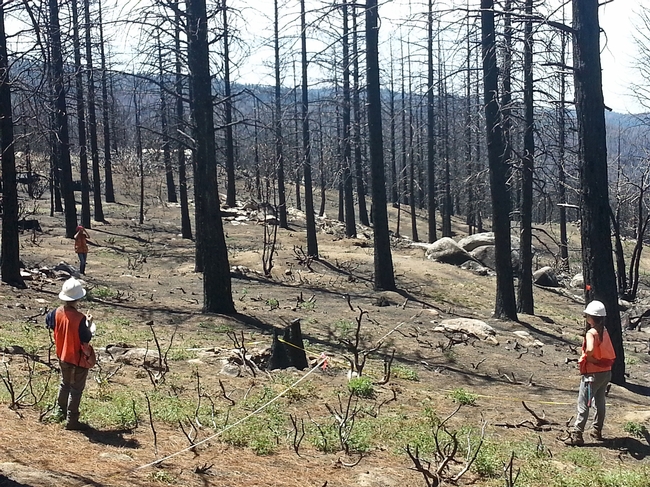
burned-area


